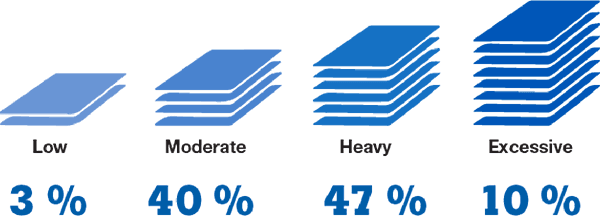Fluke Calibration sponsored and created this calibration and metrologist salary survey. Invitations were circulated via email and on social media. The survey included questions about respondents’ geographic location; type of organization, industry, lab, and lab certification; gender; job title; education and years of experience; professional certification; salary; and workload. Calibration and metrologist salary estimates listed below are based on median values by volume of pay ranges selected.
By comparing this year’s calibration and metrologist salary results with prior-year data, we see about a 4% uplift in average reported salaries (up from relatively flat growth numbers the previous year). Number of calibrations per year shows significant growth, with a majority of respondents reporting “heavy” or “excessive” workloads for the first time since we began collecting this data. Those hoping to see uplift in percent women in the calibration industry will not see that reflected in this year’s sample, which showed a slight decrease in those numbers.
New to the salary survey this year, we adjusted the “lab types” and “organization types” to be more descriptive, and consolidated industries into larger cohorts. We also slightly adjusted job roles to better account for quality engineers and lab managers. We added questions regarding lab and professional certification, and removed the question about “hourly vs salaried” to offset that change.
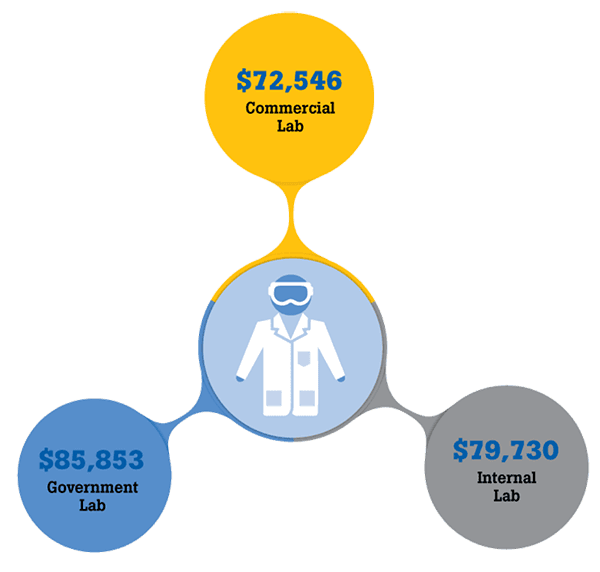
Median pay ranges for all lab types have been relatively similar in the past, with government labs emerging last year with both higher reported pay and indications of year-over-year salary growth. We see this again this year, with average reported pay in government labs now +13% higher than those reported last year.
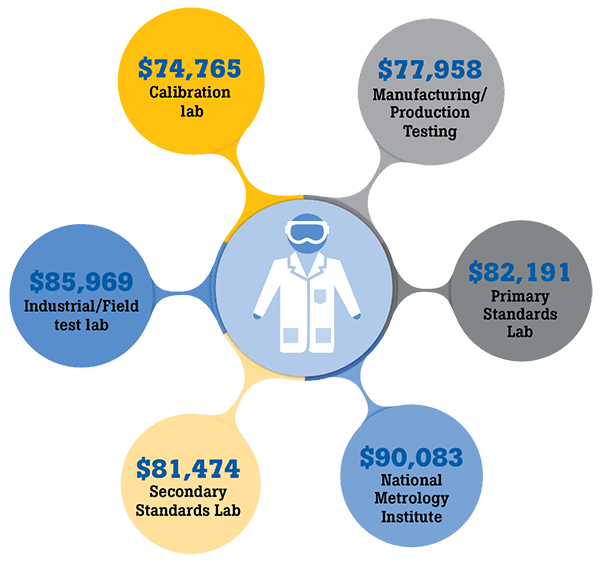
Reported pay for every population in this category appears to have grown year-over-year.
| High school diploma | $68,518 | 23 % |
| Associates or technical degree | $74,398 | 43 % |
| College degree | $86,764 | 27 % |
| Master’s degree | $94,456 | 7 % |
| Doctorate degree | $104,000 | 1 % |
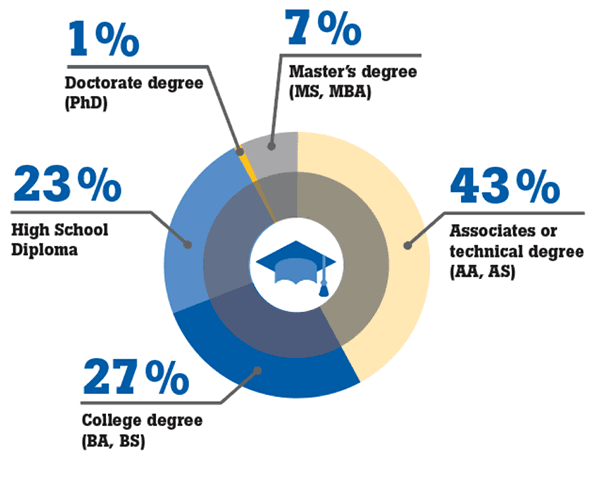
Pay averages across regions were generally reported between the $65,001 and $95,000 range. The Pacific-region cohort showed highest average salaries for the second year in a row.
| Average salary range | $80,001 - $95,000 |
| Pacific | $87,250 |
| New England | $81,987 |
| West North Central | $80,764 |
| Average salary range | $65,001 - $80,000 |
| Mountain West | $75,773 |
| West South Central | $74,940 |
| East North Central | $72,360 |
| East South Central | $76,250 |
| Mid Atlantic | $78,569 |
| South Atlantic | $76,518 |
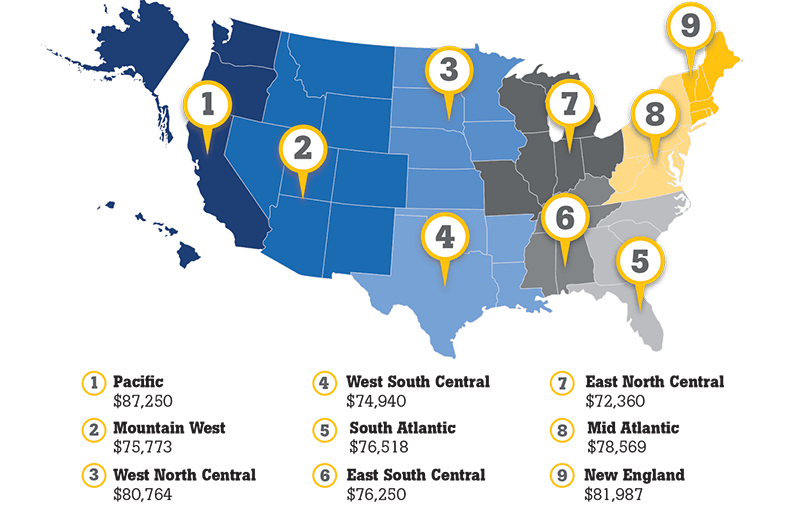
Predictably, longer-career service in calibration/metrology is generally associated with higher salary. Salary reported for the early-career cohort in our sample indicates higher starting salaries as compared to last year’s data.
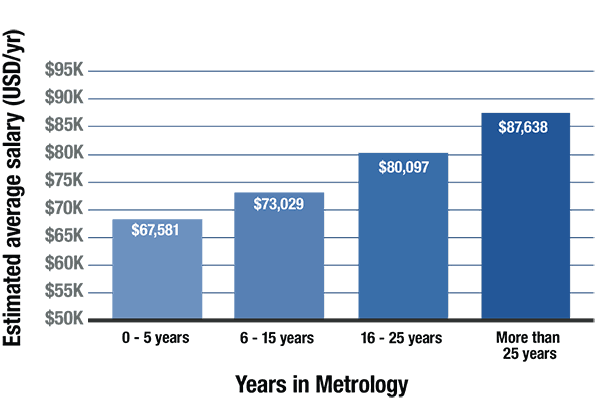
Three years’ data continues to show no apparent correlation between calibration volume and median reported pay. The only trend we see in this year-over-year data is a weak indication that labs that perform more than 10,000 calibrations per year seem to be the highest-paid cohort every year.
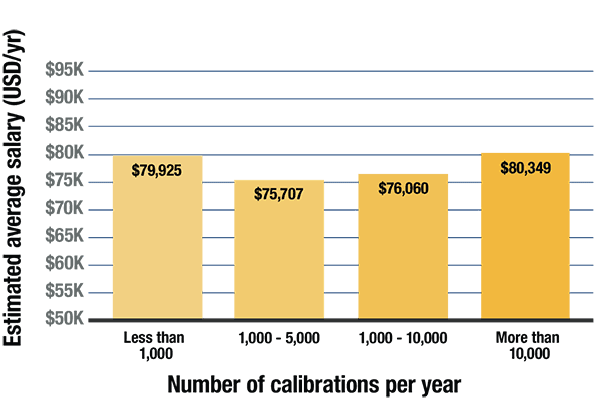
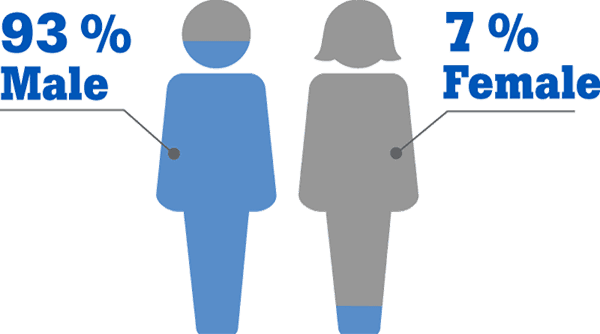
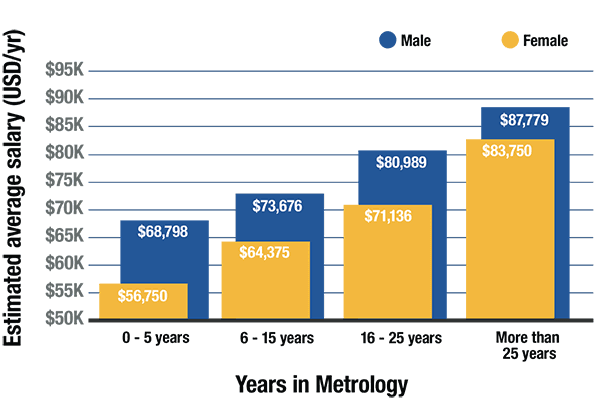
As with previous years, our sample indicates an industry that is mostly male and shows possible pay disparity between the genders. That gap appears to be greatest for early-career women and decreases over time. Regions with the least gender/pay differences indicated include New England, West North Central and Pacific; those with the greatest deltas were South Atlantic, West South Central
and East South Central. Gap analysis by job title was limited by sample sizes, but the biggest gender/pay disparity among job titles appeared to be for Quality/Calibration Engineers. Lab Managers, Metrologists and “Other Engineer” did not show such inconsistencies between the salaries of men and women.
| Job Role | Average salary range reported | Estimated average salary (USD/yr) |
| Technician | $65,001 - $80,000 | $68,207 |
| Metrologist | $65,001 - $80,000 | $78,024 |
| Quality/Calibration Engineer | $65,001 - $80,000 | $79,232 |
| Sales/Marketing | $80,001 - $95,000 | $86,182 |
| Lab Manager | $80,001 - $95,000 | $89,322 |
| Other Engineer | $80,001 - $95,000 | $90,578 |
| Executive Management | $95,001 - $110,000 | $97,288 |
| Other not listed | $80,001 - $95,000 | $83,879 |
| Average range reported Other | $80,001 - $95,000 |
| Healthcare* | $95,000 |
| Government Non-DOD/DOE | $91,275 |
| Semiconductors | $90,344 |
| Government DOD/DOE | $89,042 |
| Electrical equipment manufacturing | $84,318 |
| Average salary range reported | $65,001 - $80,000 |
| Distributors/procurement | $57,500 |
| Other manufacturing | $69,000 |
| Measure and control instruments | $70,748 |
| Communications equipment | $70,625 |
| Automotive | $72,194 |
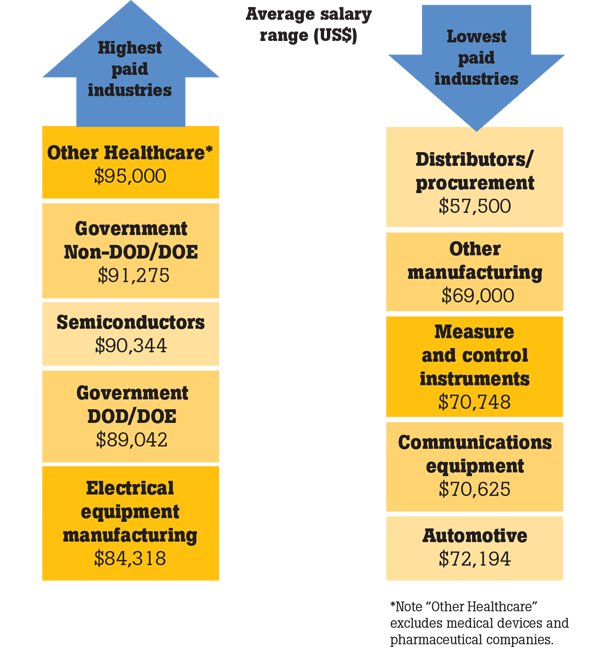
Most labs in our sample were not accredited according to ISO 17025. The industries most likely to be accredited to ISO 17025 were Aerospace (36%), Government Non-DOD/DOE (35%), Medical Devices (32%) and Oil & Gas (32%).
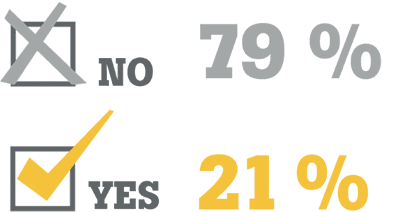
About 47% of the professionals in our sample have completed the Calibration Technician Certification program from the American Society of Quality or a similar licensing program in their region.
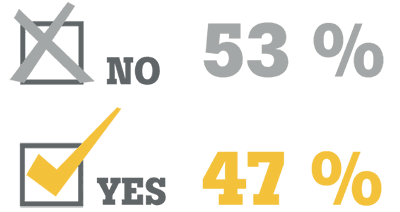
Last year 34% of survey respondents indicated their workloads were heavy or excessive. This year our sample indicates those cohorts have grown to 57%.
